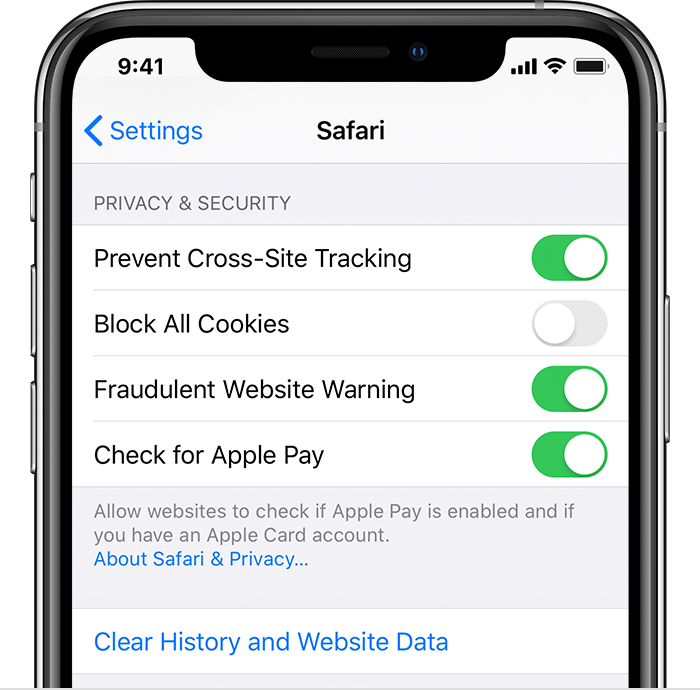Safari extensions add functionality to Safari, so you can explore the web the way you want. Extensions can show helpful information about a webpage, display news headlines, help you use your favorite services, change the appearance of webpages, and much more. Extensions are a great way to personalize your browsing experience.
Use the App Store to conveniently download and install Safari extensions. All extensions in the App Store are reviewed, signed, and hosted by Apple for your security.
Filter lists in the AdBlock for Safari Mac app. The Mac app uses Apple's Safari content blocking to block ads. In this respect, it's the same as our iOS app. Apple's content blocking mechanism doesn't understand the standard syntax that is used in standard filter lists. Instead, it uses a special content blocking syntax. The Library folder contains many of the resources that installed applications need to use, including preferences, support documents, plug-in folders, and ever since OS X Lion (10.7), the files that describe the saved state of applications. Float a video window from Safari over your desktop or a full-screen app on your Mac or iPad. Play the video in any corner of the desktop and resize it to see more or less of what’s behind it. So you can watch videos while you browse photos. Or catch up on your favorite show while you catch up on email.
How to install extensions
- Apple support is here to help. Learn more about popular topics and find resources that will help you with all of your Apple products.
- However, in another modern web browser such as Firefox the 'Turn Off the Lights' Firefox extension can dim the User Interface of this web browser app. So, everything is dark with a single click on the lamp button. From the toolbar to the buttons. But in Apple Safari that is not possible with the API limit.
- The latest version of OS X features an elegant design, includes enhancements to the apps you use most, and enables your Mac and iOS devices to work together in new ways. Learn more about OS X; Safari extensions are a great way for you to add new features to Safari. Built by developers, Safari extensions use the latest web technologies.

Macs are premium devices with amazing features, awesome apps, and top-notch desktop programs supplied by Apple. But there are loads more third-party apps that can change the way you use your Mac.
Start by installing the latest macOS updates to make sure that Safari is up to date. You need Safari 12 or later to get Safari extensions from the App Store.
Find and install an extension:
Mac Apps Safari Apple Support Windows 10
- Open Safari and choose Safari > Safari Extensions from the menu bar.
- The App Store opens to the Safari Extensions page, as pictured above. To download and install an extension, click Get or click the price. You might be asked to sign in with your Apple ID.
- Click Install.
- After the extension is installed, click Open and follow the onscreen instructions provided by the extension.
Then return to Safari to turn on the extension you installed:
- Choose Safari > Preferences.
- Click Extensions.
- Select the checkbox next to the extension's name.
All extensions installed from the App Store are automatically kept up to date.
How to turn off or uninstall extensions
Choose Safari > Preferences, then click Extensions.
- To turn off an extension, deselect its checkbox.
- To uninstall an extension, select the extension and click the Uninstall button. If you can't determine what an extension does, or you don't expect to use it again, you should uninstall it.

Learn more
Safari no longer supports most web plug-ins. To load webpages more quickly, save energy, and strengthen security, Safari is optimized for content that uses the HTML5 web standard, which doesn't require a plug-in. To enhance and customize your browsing experience, use Safari extensions instead of web plug-ins.
Before you start, check the version of Safari running on your Mac. To display the version number, choose Safari > About Safari.
- If your Safari version is 11.0 or later, follow the steps in For Mac OS X 10.11, macOS 10.12, and later.
- If your Safari version is 10.0 or later, follow the steps in For Mac OS X 10.10.
Apple Support For Macbook
Note:
Apple Safari version 14, released for macOS in September 2020, will no longer load Adobe Flash Player or play Flash content. Please visit Apple’s Safari support for more information.
Click the Websites tab and scroll down to the Plug-ins section. Locate the Adobe Flash Player entry.
Select a setting to use for Flash Player when you visit other websites.
You can configure Flash for individual websites (domains). Select a website listed in this window, and choose Ask, Off, or On.
Exit Preferences after you finish configuring Flash Player.
Apple Support For Mac Pro
Note:
If you are viewing Safari in full-screen mode, mouse over the top of the browser screen to see the menu.
Click the Security tab. Ensure that Enable JavaScript and Allow Plug-ins are selected. Click Plug-in Settings.
From the When visiting other websites menu, choose On, and then click Done.